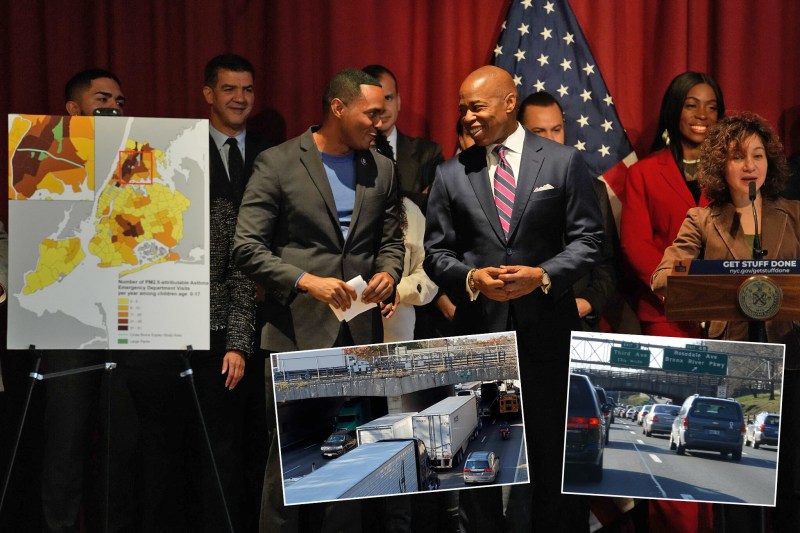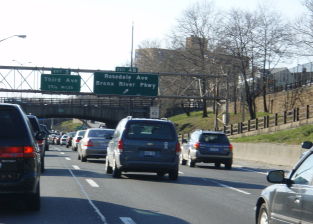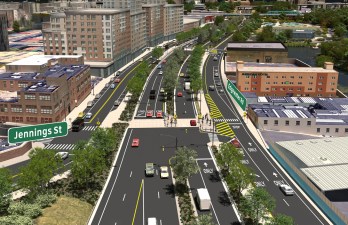City Wins Biden Bucks to Begin the Process of Studying the Capping of the Cross Bronx Expwy


It’s time to put a cap in the Cross Bronx.
A bevy of government officials, including Mayor Adams, Rep. Ritchie Torres and state DOT Commissioner Marie Therese Dominguez, announced on Monday that the city had won a $2-million federal grant to begin the process of studying the capping of the notorious Cross Bronx Expressway.
“There is no initiative that we could pursue that would do more to improve the public health of the Bronx, that would do more to improve the air quality and life expectancy of the Bronx than the transformation of the Cross Bronx Expressway,” Torres said at a press conference to announce the grant.
The $2 million will fund what Mayor Adams called “a landmark community-driven study” on what to do about the noxious freeway, with a particular emphasis on looking at how to cap a highway that cleaves the Bronx and has been linked to negative health outcomes for anyone living nearby.
A first round of community meetings on the future of the highway will kick off in February, and according to City Hall, will focus on how to both deck the Cross Bronx and create new public space atop it. The study is specifically supposed to look at how to create bike and pedestrian links, and connect neighborhoods to the north and south of the highway, how to reduce car and truck emissions along the highway, improve traffic safety specifically on highway ramps, and find more sustainable methods to move freight through the city.

Right now, more than 200,000 vehicles per day traverse the Cross Bronx Expressway, including 300 diesel trucks per hour. As a result, rates of diseases like asthma, hypertension and diabetes are higher for the 220,000 residents around the highway than elsewhere in the city. In addition, children under 17 suffer the highest number of emergency room visits from asthma due to air pollution in the city.
By 2024, the city and state are supposed to reveal a multi-year plan with short- and long-term visions. There was talk on Monday of decks, but the mayor said the outcome will rely on the community-generated ideas.
“Everything is on the table and that’s why it’s so important to allocate the dollars to do a good thorough community-wide study, with input for all the stakeholders involved and we want to be open,” said Adams. “We want to think non-traditional ways of solving a real problem.”
The federal Rebuilding American Infrastructure with Sustainability and Equity grant is the latest step in the saga of figuring out what to do about the Cross Bronx. The potential for capping the highway became much higher when Congress passed the infrastructure bill in 2021, which specifically contained a small pot of money for studying how to tear down or cap highways that cut through economically disadvantaged communities across the country.
In 2018, Columbia professor Peter Muennig studied the possibility of capping the widely hated scar across the Bronx, and said that a decking project would cost $757 million. Beyond the moral imperative of reducing the pollution breathed in by Bronx residents near the highway, Muennig also made his case by pointing out capping the Cross Bronx would raise “quality-adjusted life years, a combined measure of health and longevity” by two months for the residents near the highway.
Torres also pointed to the relatively low cost for the impact a capped Cross Bronx could have, and also said that any future construction plan could get money from Uncle Sam.
“This is going to be expensive, I suspect, a billion dollars. The purpose of the feasibility study is to determine what can be done, how much would it cost, and that will be the basis for an actual proposal that we hope for which we would secure federal funding,” he said.


